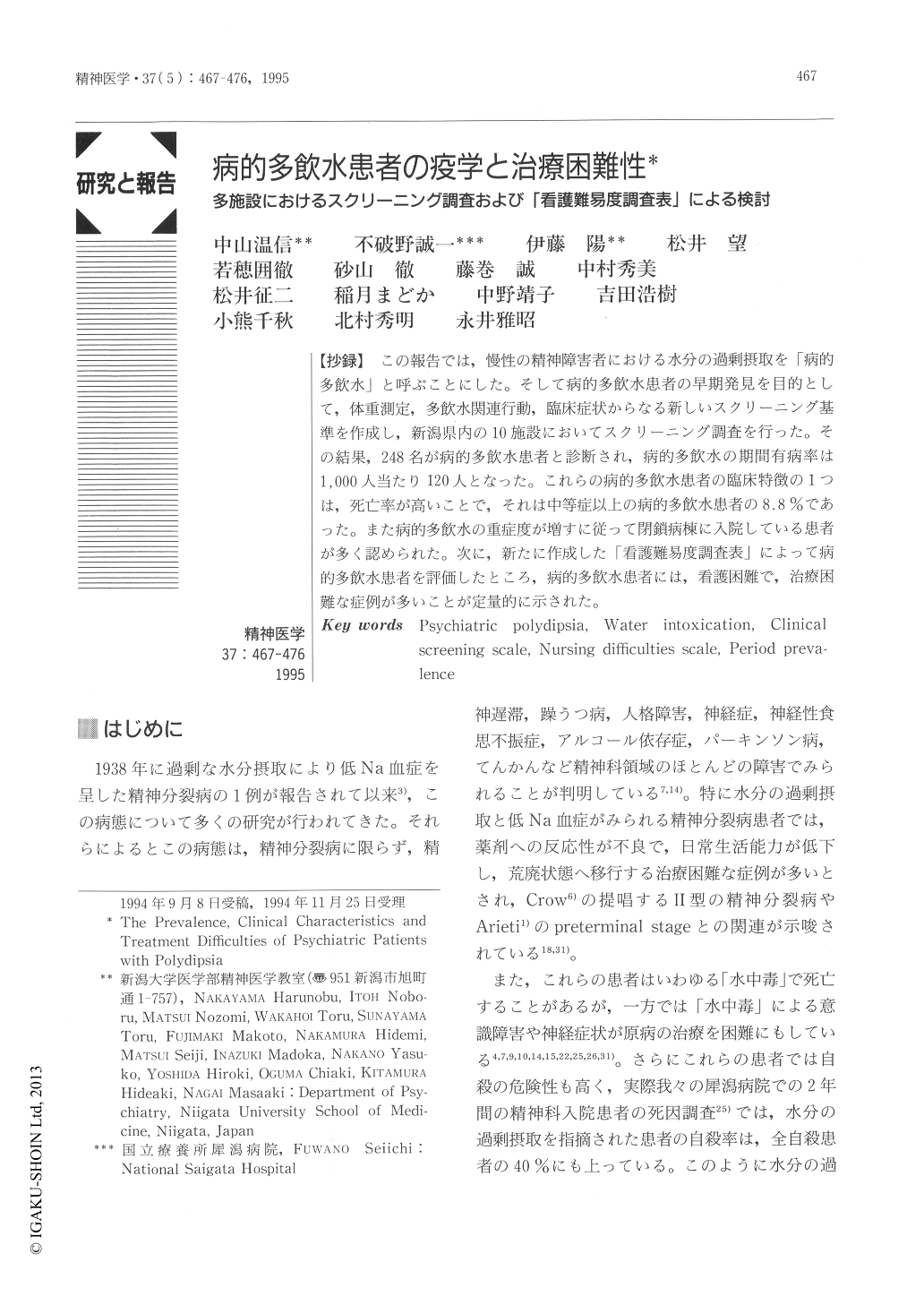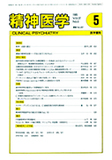Japanese
English
- 有料閲覧
- Abstract 文献概要
- 1ページ目 Look Inside
- サイト内被引用 Cited by
【抄録】この報告では,慢性の精神障害者における水分の過剰摂取を「病的多飲水」と呼ぶことにした。そして病的多飲水患者の早期発見を目的として,体重測定,多飲水関連行動,臨床症状からなる新しいスクリーニング基準を作成し,新潟県内の10施設においてスクリーニング調査を行った。その結果,248名が病的多飲水患者と診断され,病的多飲水の期間有病率は1,000人当たり120人となった。これらの病的多飲水患者の臨床特徴の1つは,死亡率が高いことで,それは中等症以上の病的多飲水患者の8.8%であった。また病的多飲水の重症度が増すに従って閉鎖病棟に入院している患者が多く認められた。次に,新たに作成した「看護難易度調査表」によって病的多飲水患者を評価したところ,病的多飲水患者には,看護困難で,治療困難な症例が多いことが定最的に示された。
Since no term has been uncovered in the literature for polydipsia in psychiatric patients, the authors have coined the term “psychiatric polydipsia” (PP) to describe mentally disturbed patients manifesting this disorder. They have also investigated a method to calculate the prevalence of PP patients and to identify those who present clinical features.
To accomplish this, evaluations by a PP screening scale (PPSS) were performed at ten mental hospitals, and 248 of 2,065 inpatients were diagnosed as manifesting PP, based on a diagnostic criteria of PP patients. As a result, the PP prevalence in their investigation was revealed to amount to 120 patients per thousand. Also, it was found that most PP patients (64.9 %) are affected by schizophrenic disorders. In addition, PPSS was found useful for detecting PP, as it showed both a very high specificity and sensitivity. According to the severity criteria for PP, the PP patients were classified into four groups : those with severe PP (n=14); those with moderate PP (n=77), those with mild PP (n=157) and, finally, PP patients who had died (n=5).
A statistical analysis was undertaken to correlate the clinical profiles of the various PP patients using the results of a nursing difficulties scale (NDS) in the 4 PP groups as against other non PP patient controls, as well as amongst each PP group. This yielded the following results: 1) the PP patients, especially more severe ones, had a high mortality rate; 2) in the closed wards, there were more patients with severe and moderate PP than those with mild PP or non-PP patient controls; 3) the greater the PI' severity, the higher the NDS score.
Those findings showed that PP patients were more difficult to be treated by medical staffs, especially in the case of severe PP.

Copyright © 1995, Igaku-Shoin Ltd. All rights reserved.


